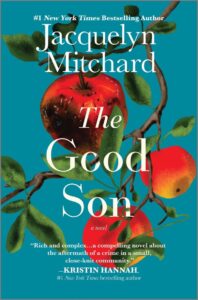I was a little kid the first time I saw Frankenstein. It was the 1931 version with Boris Karloff in the role of the monster.
On Chicago station WGN after 10 p.m., there was a show called “Creature Features” that opened with Henry Mancini’s theme from the film Experiment in Terror and a TV announcer reading this poem:
“Gruesome ghouls and grisly ghosts
Wretched souls and cursed hosts
Fog rolls in and coffins slam
Mortals quake and full moons rise
Creatures haunt and terrorize …”
That’s all I remember of that part.
I also remember that most of the giant-bug-giant-lizard movies shown back then seem rather innocent by the standards of teen-slasher films of today. (I exempt, of course, Alfred Hitchcock’s Psycho and George Romero’s Night of the Living Dead. The former was a dilly back then and it still is; and the latter, I’m still too scared to watch all the way through, although I remember vividly the commentary of one of the good guys, who said of the zombies, “They’re dead. They’re all messed up.”)
When our parents were all out carousing, my older cousins, in the guise of babysitting, let me stay up and watch these films, which were certainly not “Snow White,” which, come to think of it, was darned scary as well. They schooled me carefully, on pain of banishment, that I must never tell that I was allowed to stay up and watch terrifying cinema. I promised. That’s how I first saw Frankenstein, and my cousins were horrified when, after the movie ended, I burst into tears.
“Look what you did,” one said to the other. “She’s going to tell.”
But I wasn’t going to tell. I confounded them by saying, “It’s so sad. I feel so sorry for him!”
I meant the monster.
Who could have felt any other way? That, I never understood.
Years would pass before I read Mary Shelley’s masterpiece about the evil deeds of Viktor Frankenstein, “the modern Prometheus,” who tampered with all the laws of God and man to animate his terrible creation of pillaged body parts–because he could. Viktor Frankenstein was, of course, the real monster.
But what generations of terrified filmgoers remember was the giant manlike creature with stiff knees and bolts in his head. Throughout the story, the creature was referred to variously as “the fiend,””the demon,” “devil,” “thing” and “ogre.”
But most truly, he was referred to as “the wretch,” for wretched he was. Sure, he had a problem with anger management. But he was not responsible for the soulless being he was, nor for his quite understandable confusion and desperation. The monster did not know himself (and surely he was not alone in that …) and couldn’t comprehend why, whenever he reached out in curiosity or compassion to a human being, he ended up doing terrible harm and being first shunned, then hunted.
Think of the hordes of torch-bearing villagers at the gates of Frankenstein’s stately home. Who was bloodthirsty? You need a scorecard.
I have no doubt that Mary Shelley had mixed feelings about the monster—horror and pity commingled. And she was able to portray that ambivalence in a masterly way, as Frankenstein’s pride turned to shame and then dread.
Most of the best “monsters” embody that tragic quality. Think of the Phantom of the Opera and his doomed love for the beautiful singer, or the Hunchback of Notre Dame. Or, I almost tear up to think of it, King Kong.
In today’s psychological fiction and film, that dichotomous dynamic is much in evidence. As human beings, we respond to the tragic core even in villainous characters. It’s in our very nature.
The ability to go on loving someone even when that person has done something awful is one of the hallmarks of who we are. All primates, from humans to gorillas to bonobos, forgive—although (this should be no surprise) cats never do. Until Robert Enright’s pioneering work on the psychology of forgiveness began in 1989, almost no one asked analytically, was this tendency a human weakness or the purest expression of humanity?
Some social critics have called it “The Godfather Effect,” based on audience reactions to the landmark films: As Megan Gambino wrote in Smithsonian magazine, “I think the genius of the film, besides the fact that it is so beautifully shot and edited, is that these are mobsters doing terrible things, but permeating all of it is the sense of family and the sense of love.”
As viewers and readers, we end up sort-of guiltily rooting for somehow-appealing people who routinely destroy and despoil other lives. We’re fully aware that Sonny Corleone is a psychopath; but we’re horrified when he’s riddled with bullets and broken-hearted for his poor mother. We can balance those emotions.
So is The Godfather Effect a blessing or a curse?
Maybe it’s both.
This much I know: The ability to love someone capable of grievous misdeeds would come as no surprise to a good mother. In my new novel, The Good Son, the main character, Thea, goes on loving her college-age son, Stefan, after he is convicted of manslaughter in the death of his beloved girlfriend, Belinda. She does this not only because she cannot help herself but because she realizes that no one else will—that no one else can—not with so full a heart. Thea must recognize the horror of what Stefan has done, although he has no memory of the crime, but still offer him hope that he can make a life after prison. She does this, she says at one point, for the sake of the “trusting six-year-old he was, still cached inside him like the tender rings of a tree under the rough bark.”
Of course, there are times when loving someone capable of cruelty has terrible consequences. Women who have trusted charming con men and even killers are lucky if they lived to tell about it. Still, if no one had the capacity to hold two opposing ideas in mind simultaneously, there would be no redemption after wrongdoing, no second chances in this life.
Of course, it’s easier to love someone who does wrong if it’s someone close to you.
Think about how difficult it is to forgive a lying politician. Now think about how it is to forgive your teenager for lying about a test grade.
Stefan is Thea’s her only child, her only hope, and so, as gamblers say, she is all in. She doesn’t know if this choice will blow up in her face. But then, perhaps even the term “choice” is mistaken in this context. For Thea, as for many people caught in such a dilemma, there is no real choice.
Blessing and curse, human weakness and human grace—the cost of caring.
***


















